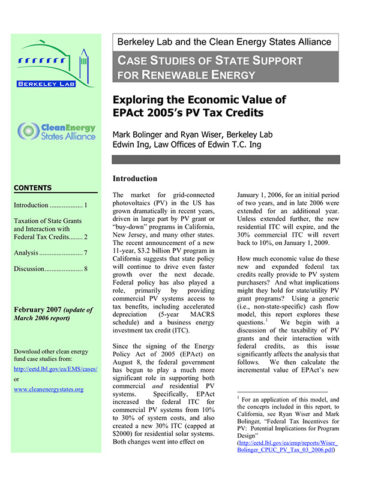Exploring the Economic Value of EPAct 2005’s PV Tax Credits
Mark Bolinger, Ryan Wiser and Edwin Ing for CESA
The market for grid-connected photovoltaics (PV) in the US has grown dramatically in recent years, driven in large part by PV grant or “buy-down” programs in California, New Jersey, and many other states. The recent announcement of a new 11-year, $3.2 billion PV program in California suggests that state policy will continue to drive even faster growth over the next decade. Federal policy has also played a role, primarily by providing commercial PV systems access to tax benefits, including accelerated depreciation (5-year MACRS schedule) and a business energy investment tax credit (ITC). Since the signing of the Energy Policy Act of 2005 (EPAct) on August 8, the federal government has begun to play a much more significant role in supporting both commercial and residential PV systems. Specifically, EPAct increased the federal ITC for commercial PV systems from 10% to 30% of system costs, and also created a new 30% ITC (capped at $2000) for residential solar systems. Both changes went into effect on January 1, 2006, for an initial period of two years, and in late 2006 were extended for an additional year. Unless extended further, the new residential ITC will expire, and the 30% commercial ITC will revert back to 10%, on January 1, 2009. How much economic value do these new and expanded federal tax credits really provide to PV system purchasers? And what implications might they hold for state/utility PV grant programs? Using a generic (i.e., non-state-specific) cash flow model, this report explores these questions.
This report was prepared for CESA by Mark Bolinger and Ryan Wiser, LBNL, and Edwin Ing, Law Offices of Edwin T.C. Ing, March 2006. Updated February 2007.

